
White French Pullman from The Pain d' Avignon Baking Book

This is my second bake from the book. They refer to the recipe as White French Pullman aka Pain de Mie.
I'm enjoying the book so far. A good read, and the author does a good job with telling the history of the bakers and the bakery and how they have developed and grown. Likewise, they do a pretty good job of explaining their methods and how their methods are used in each of the bread and pastry recipes in the book. What I do like is that while their methods are familiar, they're different enough from what I do that I've learned from both recipes (first was a banana bread).
Three facets of this bake were new to me... a long, refrigerated fermentation for the poolish, no folding or gluten development (only punching down the dough), and a really strong bake for a dark, flavorful crust (and I didn't go as long or as hot as called for). The result... Not my prettiest work. My shaping for pan loaves is out of practice and was a lumpy mess to begin with. And... Learned that I either need a new razor or need to lubricate it with a little oil before trying to score a warm, fragile dough. It stuck and pulled more than it sliced and my diamond pattern turned into... well.... something not diamond shaped. :-)
All the good news though... The dark crust did smell great out of the oven. Not sure I could have gone for 40 minutes at 500 deg, but I will push it a little harder next time. The crumb is custardy and creamy. It's tender, but not at all shreddable. I would say the exact opposite. It's firm. I've made toast and a grilled sandwich with it. The exterior becomes nice and crunchy but the interior stays "creamy". A fun bake for something with only white flour, water, salt, and ADY.
Poolish
43.2g All Purpose Flour
43.2g Bread Flour
86.4g Water
0.3g Active Dry Yeast
1) Disperse yeast in the water. Mix in flour until completely mixed with no dry flour clumps. Target temp = 75 deg F
2) Ferment at 75 deg F for 2 hours. Refrigerate for 13-14 hours.
** Poolish should be at least double in size, have some bubbles on surface, and pass the float test.**
Final Dough
156.8g All Purpose Flour
156.8g Bread Flour
173.7g Water
9.4g Salt
0.7g Active Dry Yeast
1) Disperse yeast in the water.
2) When yeast is completely dispersed, mix in poolish until completely and evenly mixed
3) Add flour and gently mix until all flours are fully wetted. Shouldn't take more than 3-4 minutes.
4) Fermentolyse for 30 minutes
5) Add salt slowly and mix in using pinch and squeeze until completely and evenly mixed.
6) Bulk ferment at 75 deg F for 4 hours. Thoroughly punch down dough to degas after 2 hours and then again after 3 hours.
7) Preshape into a round using a bench scraper
8) Bench rest 20 minutes
9) Final shape for a Pullman pan. Gently pat down to evenly distribute the dough.
10) Final proof at 75 deg F for 3-5 hours.
11) Preheat oven to 500 deg F. Quickly score the dough and place in the oven. Throw 4 ice cubes in the oven for steam (one in each corner) and bake for 40 minutes.
11a) I was too chicken to go that hot for that long. I went with 450 deg F for 20 minutes with steam, vented oven, 10 minutes at 350 deg F; remove loaf from pan; 350 deg F for 5 minutes to fully set the crust (not sure this was needed though)
Next time, I will go for the full 500 deg F for 40 minutes with just a few ice cubes instead of my full steam set up.
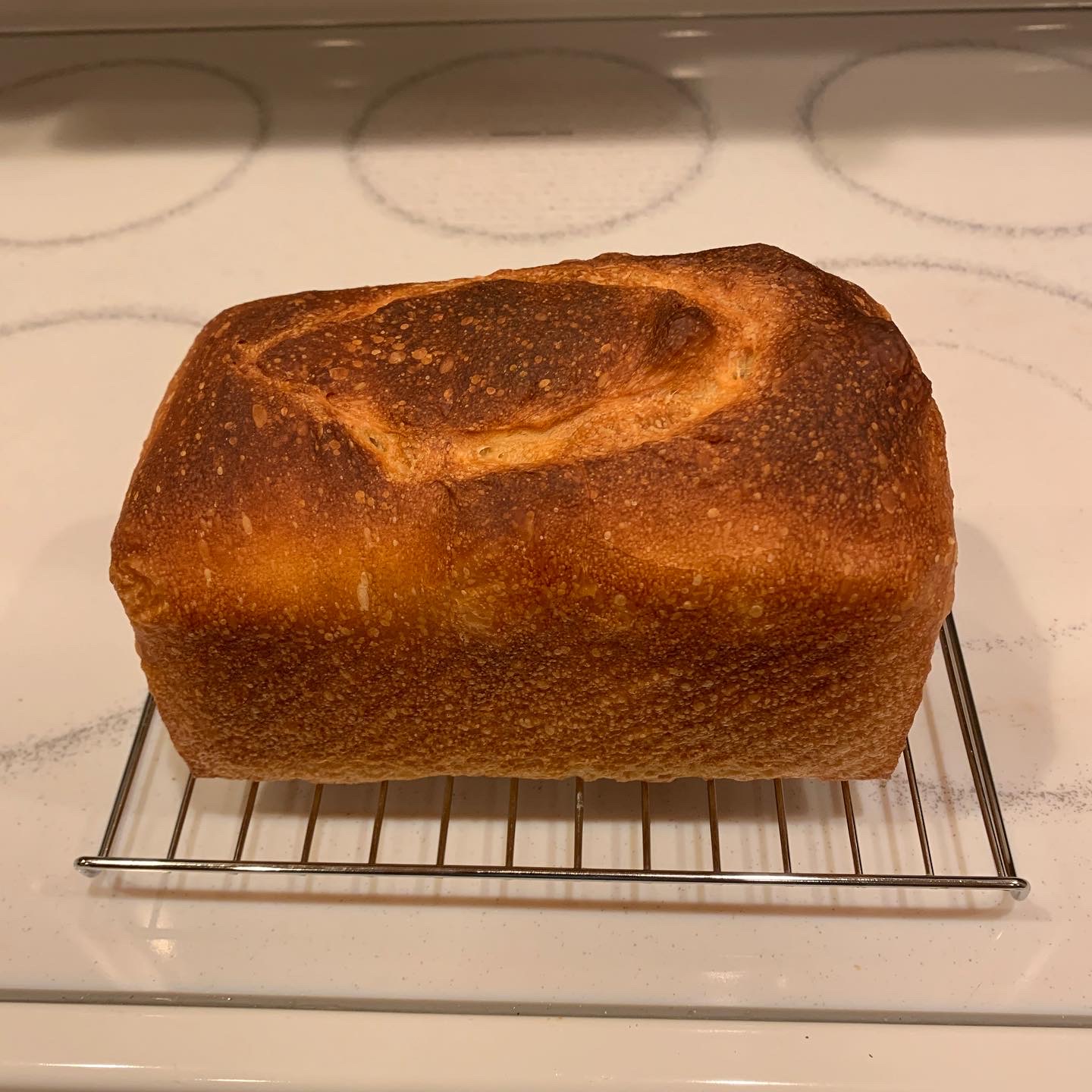
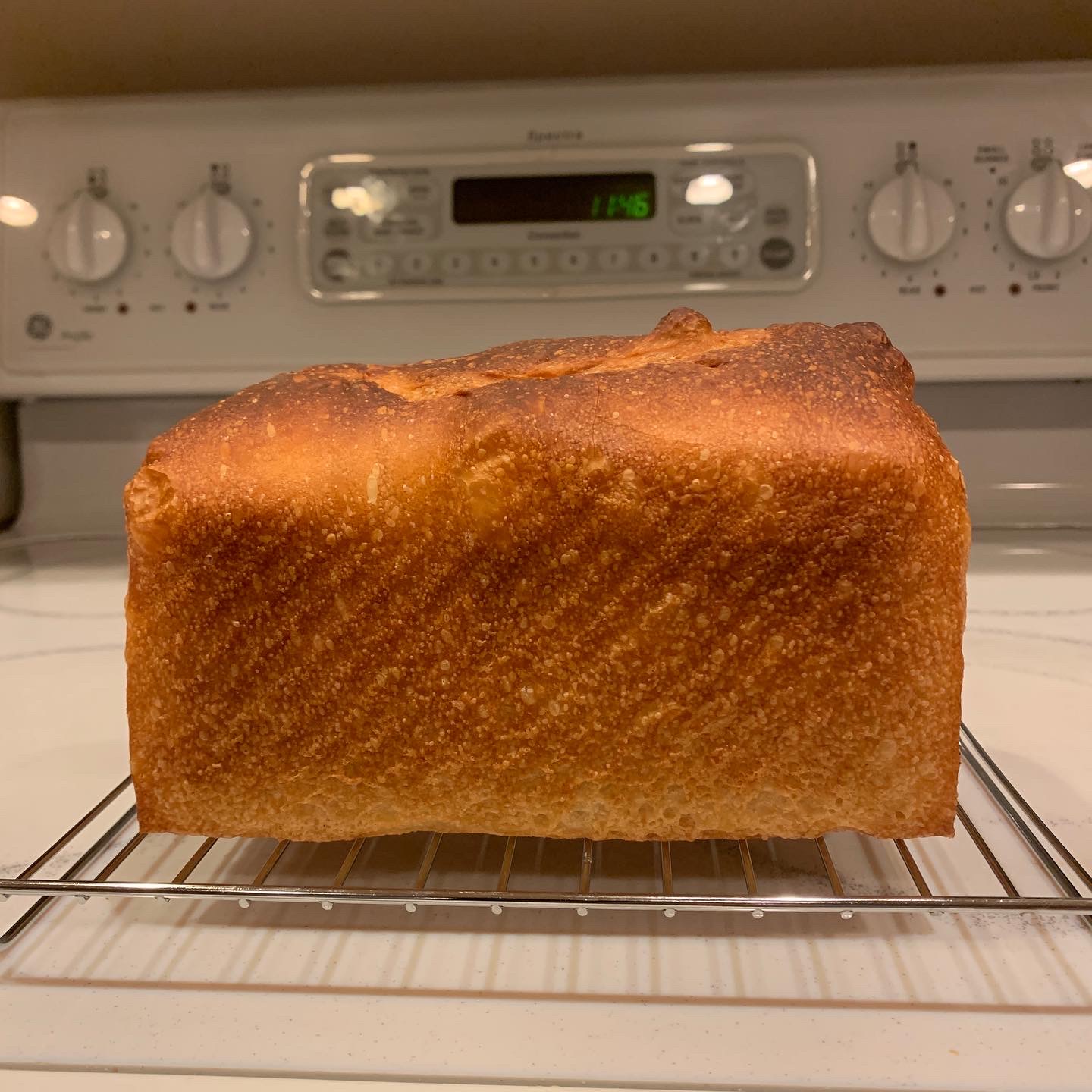
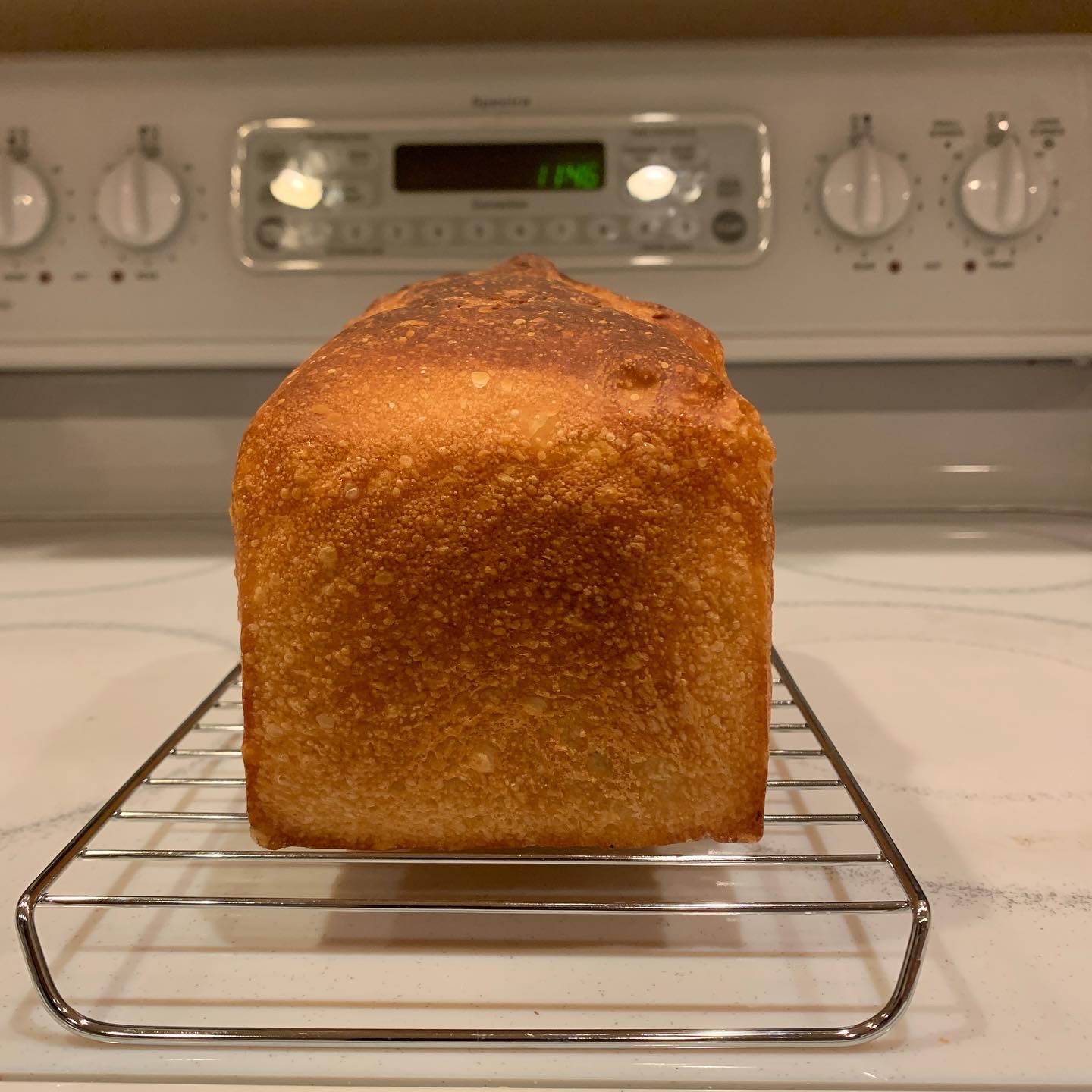
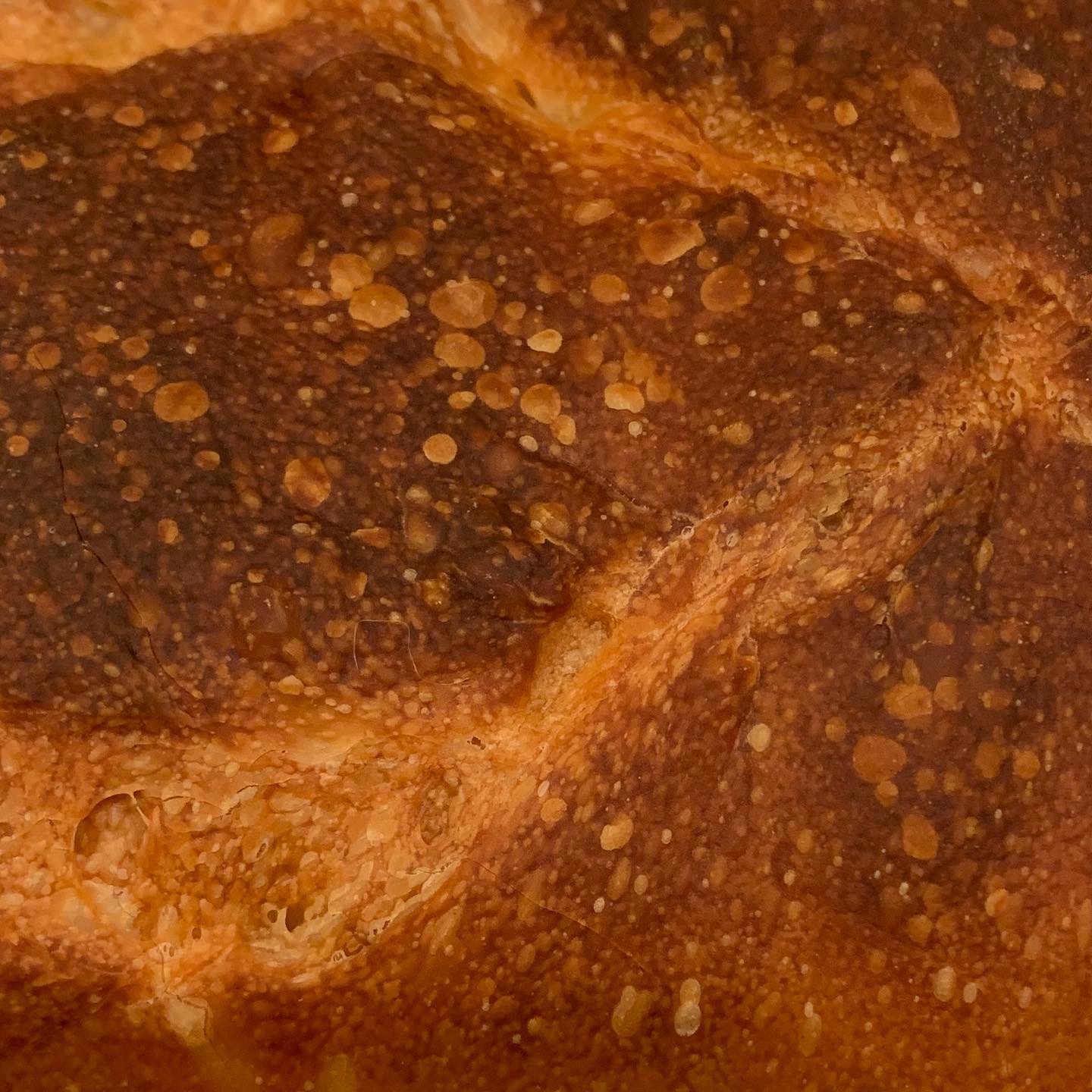
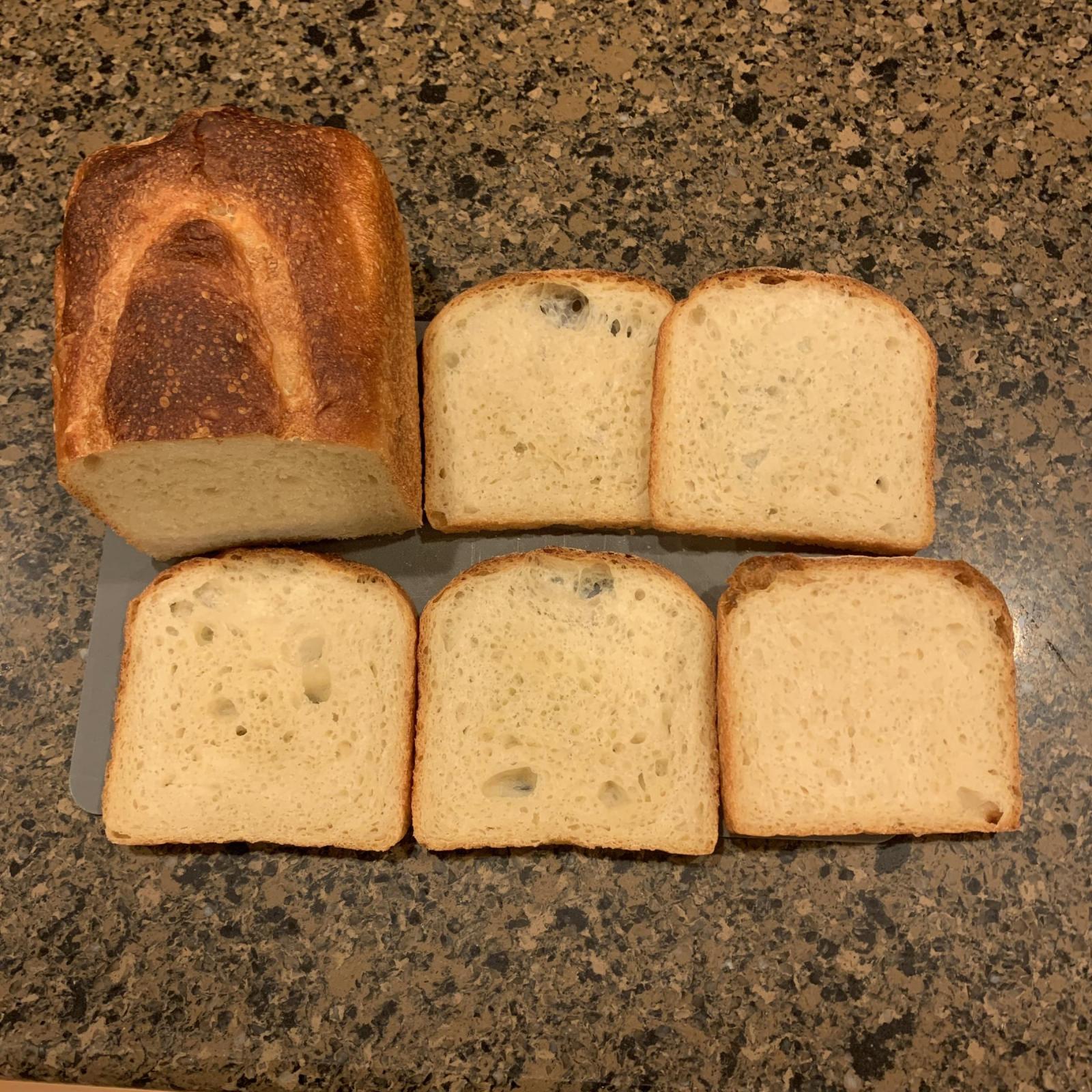
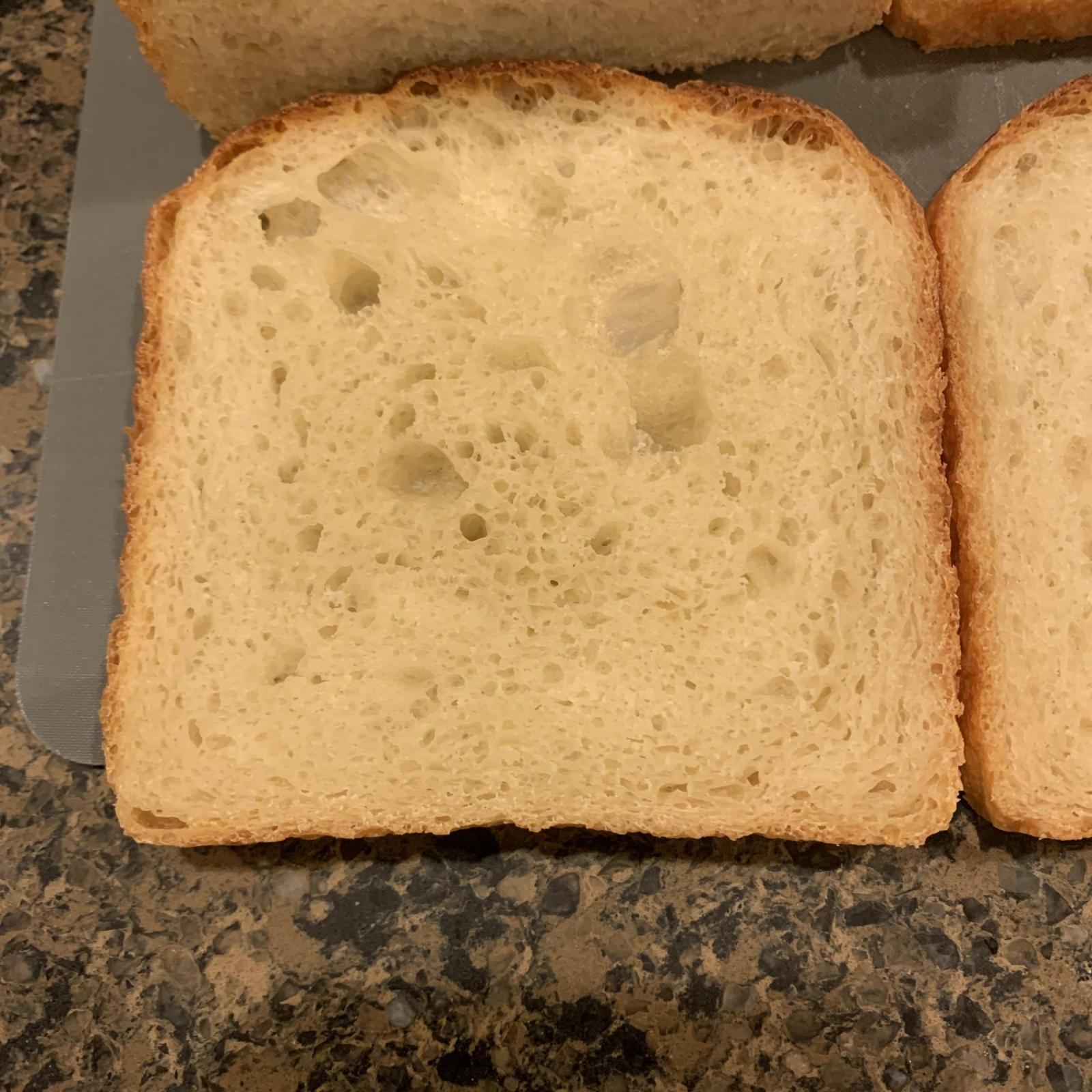
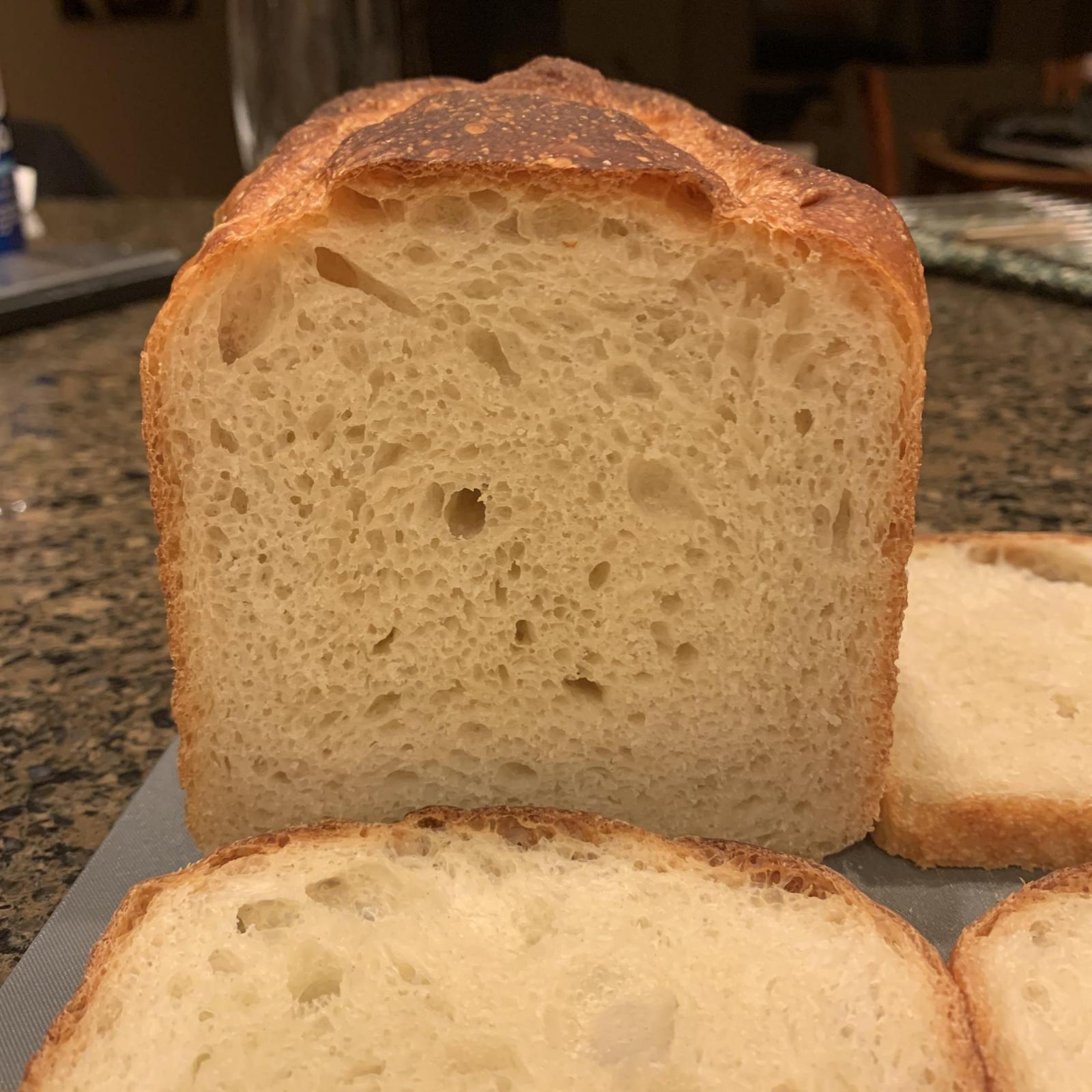
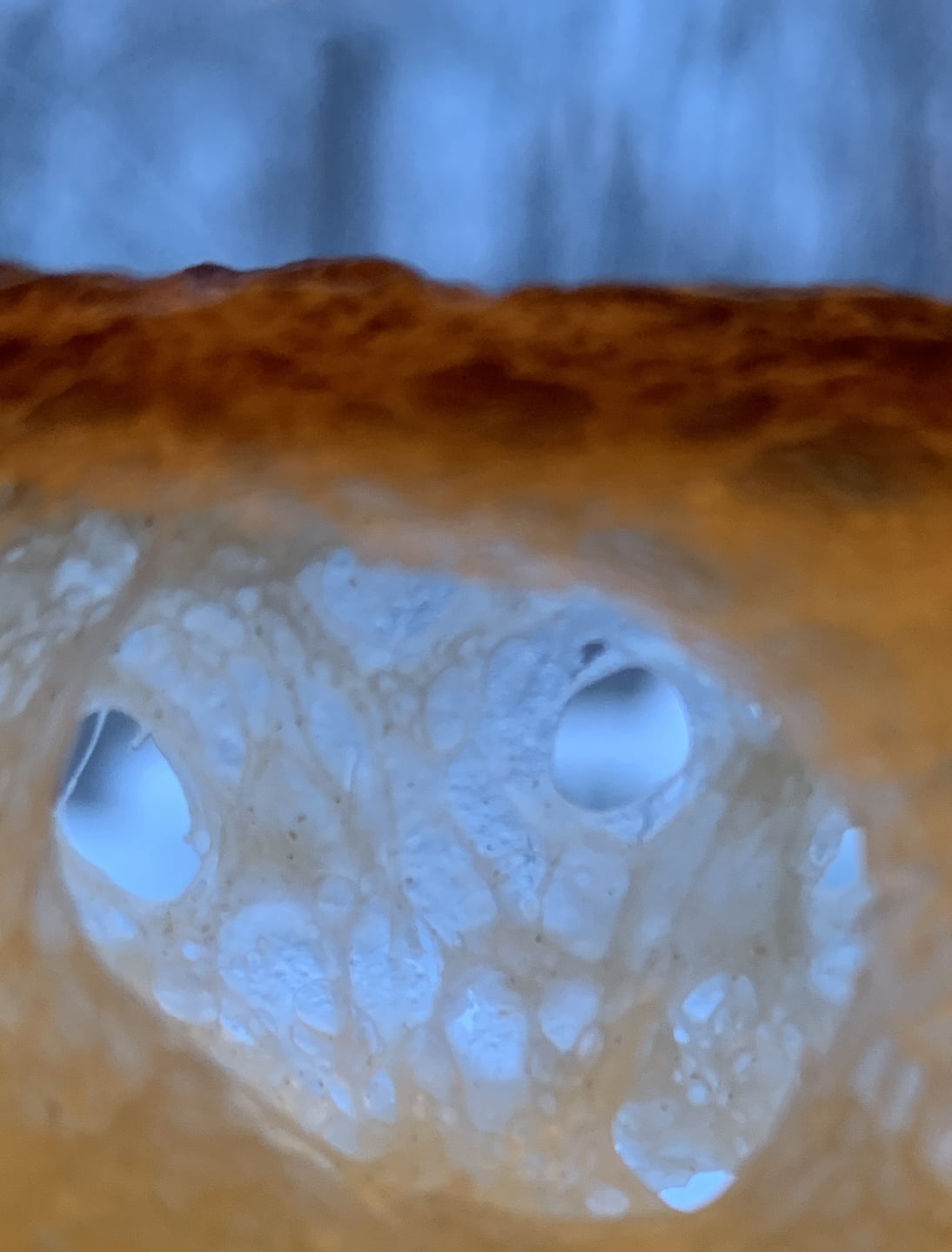


Comments
The last photo is worth the price of admission. I love how the crust blistered even on the sides! I don't know if I've ever seen that in a pan bread. Totally agree that 40 mins at 500° sounds like a bold bake and then some. I'd have been a little tentative about committing to that temp for 40 minutes, too. It's a nice looking loaf just the way you baked it and it sounds like it eats well, too. Interesting recipe, nice post. Thanks.
Thanks AG!
After 20 minutes at 450 deg, I was surprised at how dark it already was, panicked, and turned things down. Have you ever done a bolder bake like that? Is there a steady progression towards black char, or is there a rapid color change followed by no real change at all? I'm wondering if it had already turned as dark as it was going to get for the most part and I should have just gone for another 20 minutes at 450 deg.
...baked a bread at 500° for 40 minutes. You'd need to save room for me in the chicken coop. Hopefully someone with experience in higher heat baking will weigh in.
I've been known to cook at 450 and can tell you from experience that it will continue to char (I just scrapped it off like burnt toast) and thicken the crust. My wife demands crispier and crispier crusts, so ... Funny thing is when she first saw the charred outside of the loaf, she declared it burnt and ruined. After some scrapping and leaving it out for an hour or two, she decided it was just right.
I’m always surprised when recipes call for a biga or poolish and then still add more IDY at mix. I would think that increasing the percentage of pre-ferment would be better to improve the flavour and speed up fermentation if that is what the additional IDY at mix is for. Regardless this is a nice bold bake Troy. I too have never seen blisters on the sides of pan breads before, that is quite cool.
Benny
I was wondering as well until I saw the poolish. It was far less developed with the refrigeration than a typical poolish left out overnight at 70-72 deg F. They say the purpose of the refrigeration is to assure no sour notes at all are developed. It gives the poolish a mildly sweet aroma. Because of that lower development, I don’t know how well the poolish as shown in the recipe would leaven the final loaf without the additional ADY. A bigger poolish might work though.
Ah that makes sense.